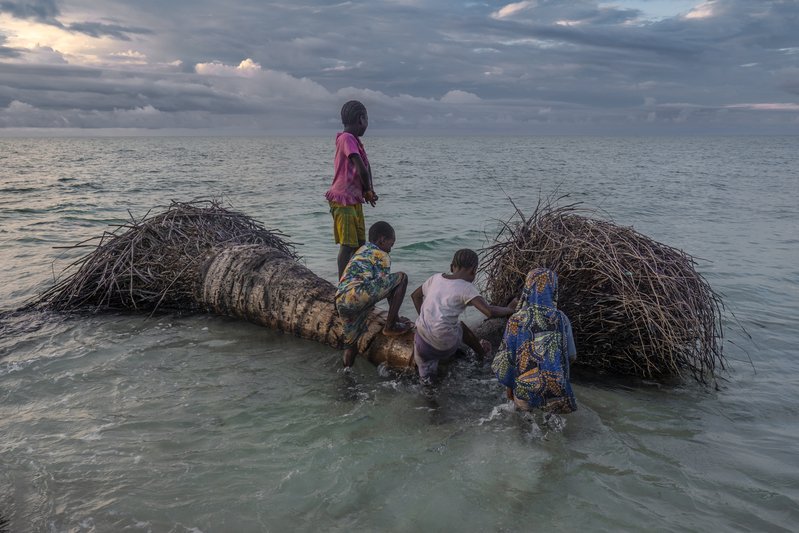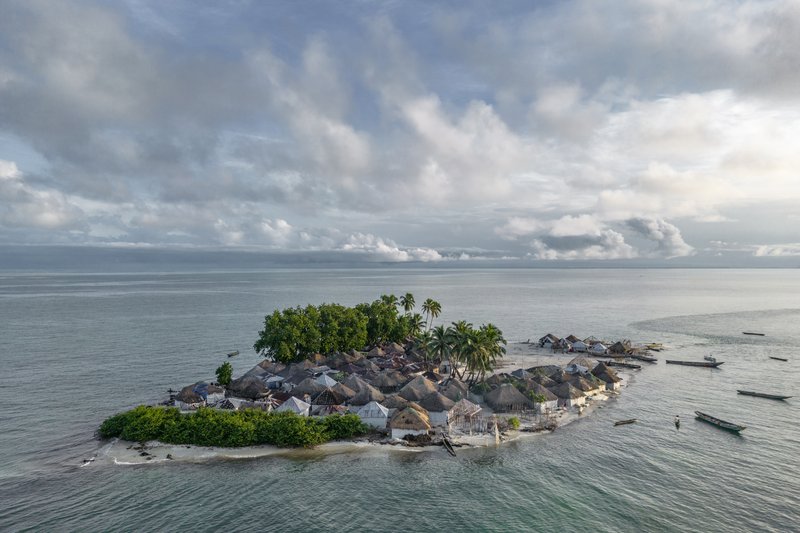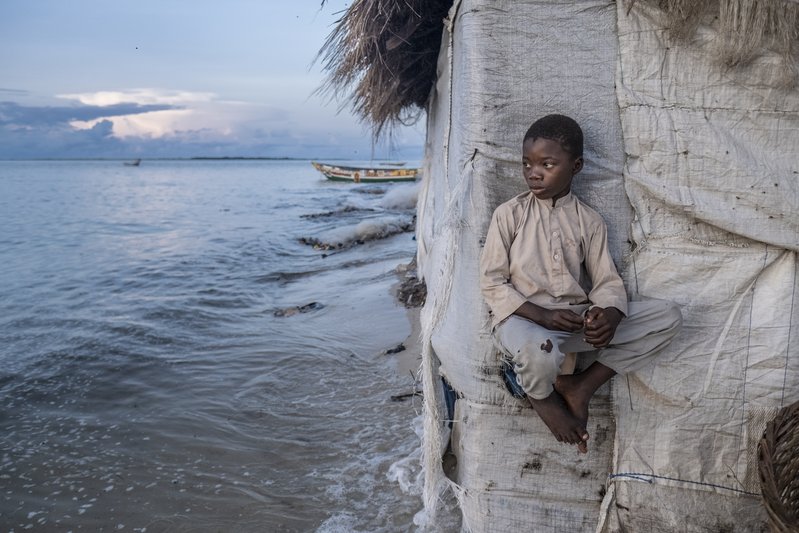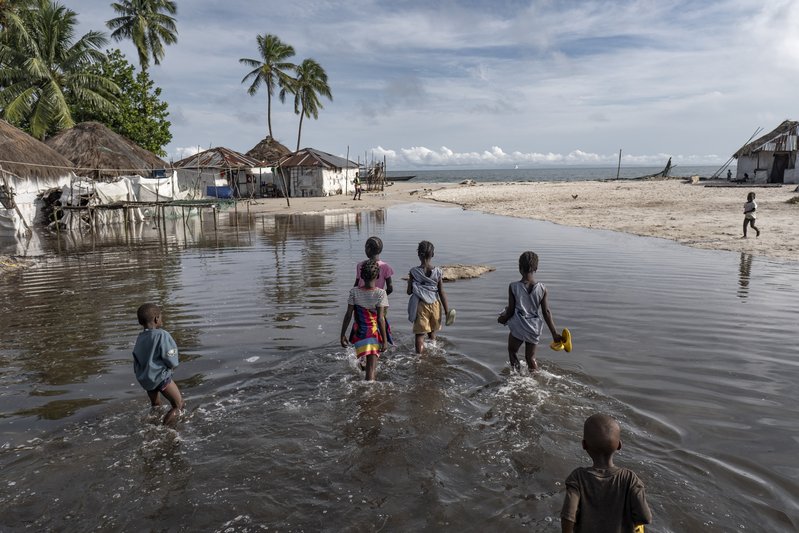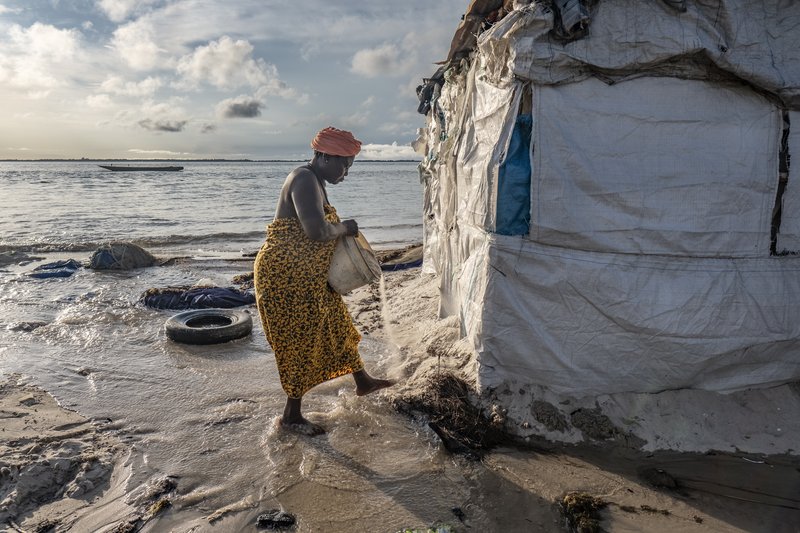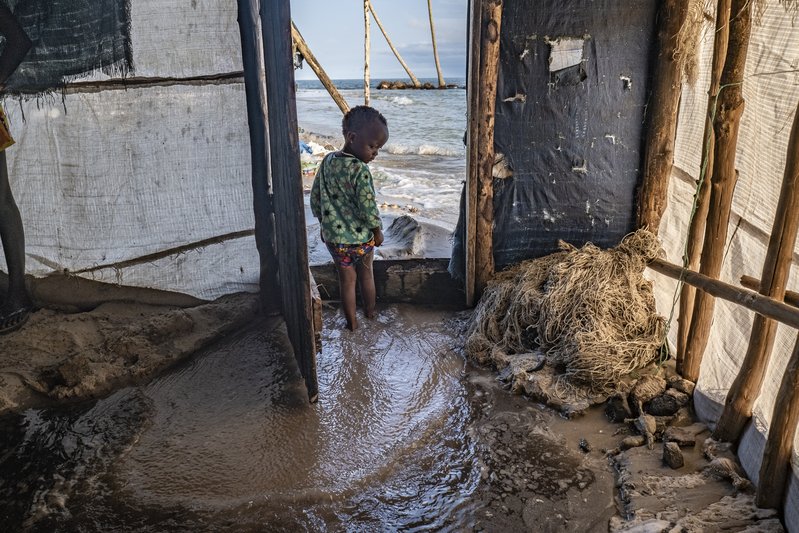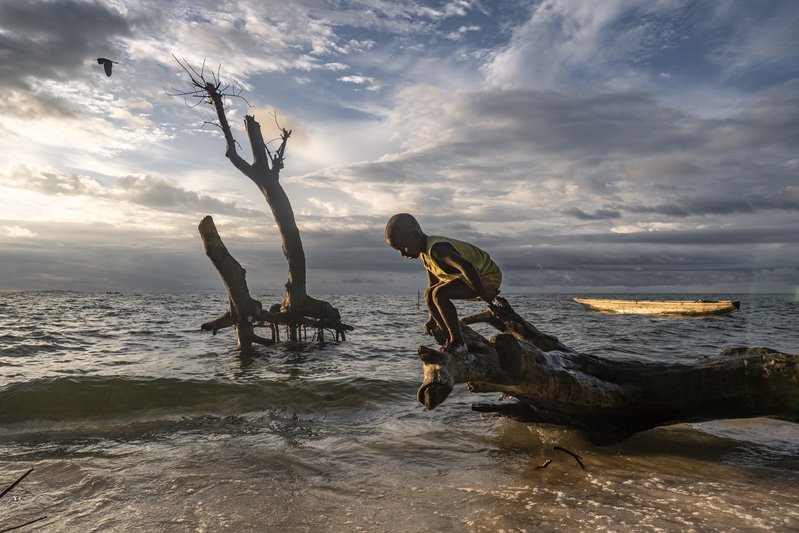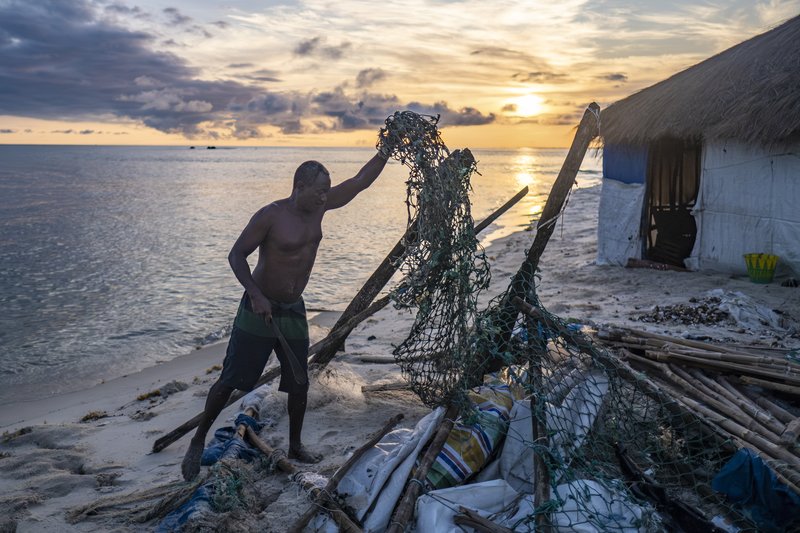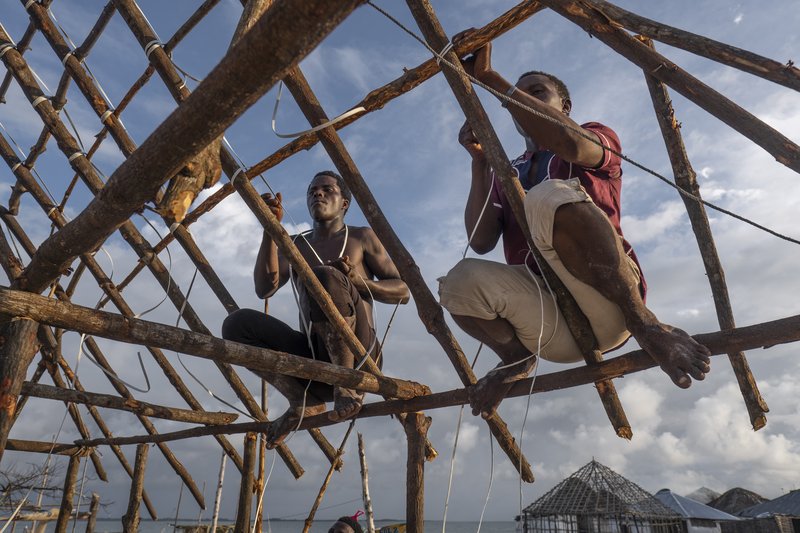Finalist: Lost to the Sea: Sierra Leone's Disappearing Island
A narrative picture story, essay, sequence, or series that increases the understanding and appreciation for science or the natural world. Studio scenes that are arranged by the photographer are not eligible.
8-year-old Ndole Kamara looks out to sea from a perch on the side of his family's fish-smoking hut as the rising tide laps against its walls on Nyangai Island, Sierra Leone, on the 29th of September 2023. Each time the islanders lose their home to the sea, they build another further inland, onlyy for the sea to catch up with them again. Knowing that their homes will likely not last long, most islanders now build simple huts using old sacks sewn together over a frame of sticks for walls, giving the island the transitory feel of an IDP camp.
Lost to the Sea: Sierra Leone's Disappearing Island
Off the coast of Sierra Leone, a remote island once home to thousands of people is on the verge of disappearing into the sea in the face of devastating coastal erosion fuelled by rising sea levels and ever more destructive extreme weather events. In just ten years, Nyangai Island has gone from 700m in length to just 170, in one of the starkest illustrations of the impacts of climate change anywhere on earth. Lacking the means to construct flood defences, the island's residents can do little but watch as their homes are swept away by the tides and what's left of Nyangai continues to shrink. Some fear that in as little as two years, the island on which their families have lived for generations will have vanished altogether beneath the waves.
With its densely populated coastal areas, its heavy reliance on subsistence agriculture and fishing, and its limited capacity to implement costly adaptation measures, Sierra Leone has been identified as one of the world's most vulnerable countries to the effects of climate change, despite having contributed virtually nothing to global CO2 emissions. But with sea levels continuing to rise and extreme weather events becoming more frequent, the experience of this remote West African island also offers a glimpse into the likely future of dozens of other low-lying areas around the world in the decades to come.
Nyangai once had three villages, extensive forests, and a football pitch where children could play. Now, the forests are gone, along with most of the land, the football field is under water for 22 hours of the day, and the remaining 400 residents live packed tightly together on the last available piece of land. Most have lost several homes to the sea, each time building a new one further inland, only for the sea to encroach and force them out again.
Most of Nyangai's residents have by now fled to other islands or the mainland, joining the estimated 20 million people around the world who are displaced by climate change and extreme weather events each year. For those who remain, life is increasingly precarious.
"My heart is broken," said the island's Chief, Mustafa Kong. "God will decide what happens to us. We're in his hands now."
